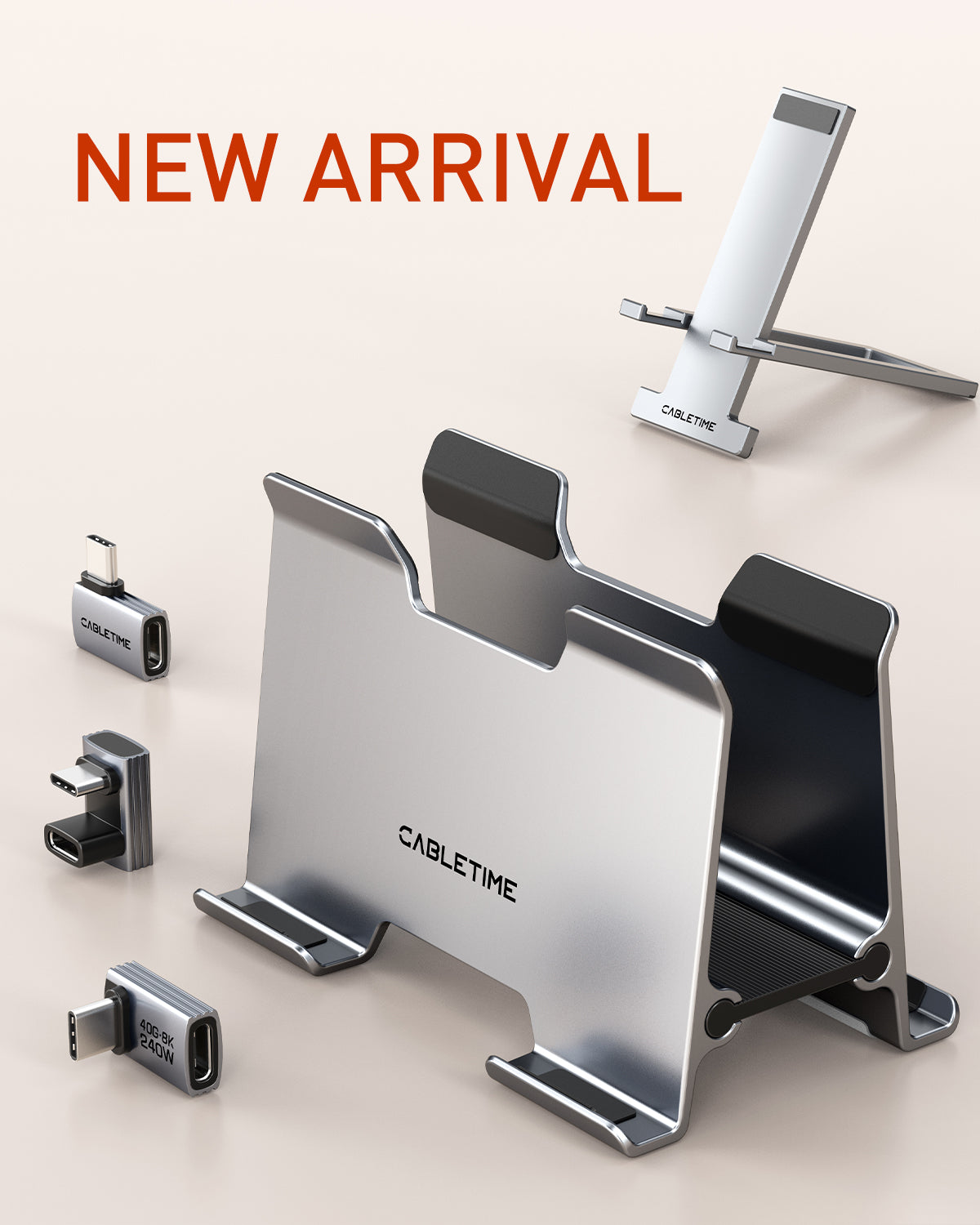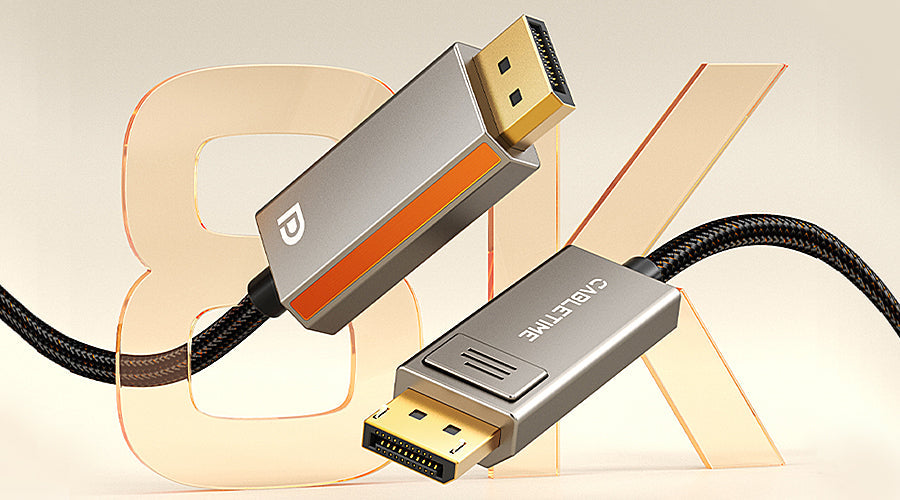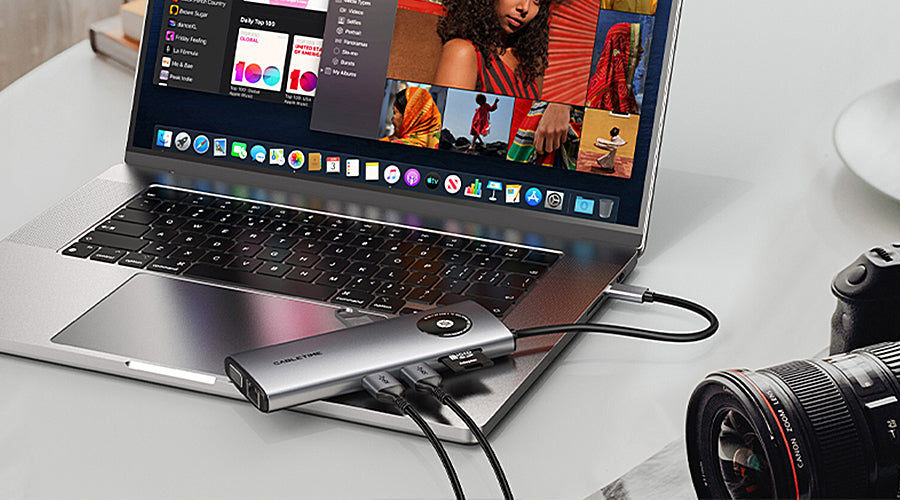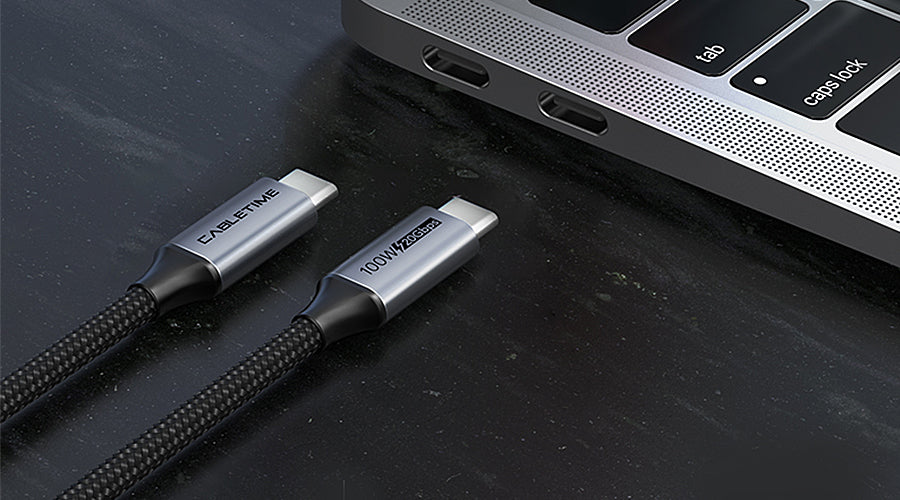Display stream compression (DSC) is an increasingly important technology for transmitting high resolution images and video across interfaces like HDMI and DisplayPort. As display resolutions continue to advance, DSC allows data to be compressed with little to no loss in visual quality, dramatically reducing bandwidth requirements. This allows higher resolutions, faster refresh rates, and next-generation display features to be achieved.
In this comprehensive guide, we’ll cover everything you need to know about DSC—from the fundamentals of how it works to its applications, benefits, challenges, and future outlook. Let's dive in!
Table of content
- 1. DSC Basics: What Is It and How Does It Work?
- 2. Why Does DSC Matter? Key Advantages and Use Cases
- 3. DSC Benefits for Image/Video Quality
- 4. Should You Enable DSC? Key Considerations
- 5. Current Generations and Future Outlook
- 6. DSC in Display Interfaces: DP and HDMI Standards
- 7. Key Challenges and Limitations with DSC
- 8. Future Trajectory: Where is DSC Headed?
- 9. Best Practices for Utilizing DSC
- 10. Conclusion: DSC Critical for Pushing Display Boundaries
- 11. People Also Ask
DSC Basics: What Is It and How Does It Work?
Before jumping into the advantages of DSC, let's build a foundation of what it is and why it's useful.
Demystifying the Definition and Principles of DSC
At its core, Display Stream Compression or DSC is an image and video compression algorithm specialized for digital display interfaces. This compression scheme was specially designed for transporting ultra high-definition content across bandwidth-constrained interfaces unable to handle such immense raw, uncompressed data rates.

The DSC algorithm leverage concepts of prediction, spatial correlation, entropy coding, and reconstruction to minimize data volume in an intelligent, visually lossless manner specifically tailored to displays.
Unlike JPEG or HEVC which target maximal compression density, DSC prioritizes perceptual quality on displays. The math underneath may seem complex, but the value realized through DSC's approach makes next-generation display resolutions possible years ahead of schedule.
DSC's Data Volume Reduction Mechanism
The core benefit DSC provides is cutting the raw bandwidth load of transferring uncompressed images down to sizes link interfaces can support.
For example, an 8K display at 60 Hz with 30-bit color and no compression requires nearly 100 Gbps bandwidth which current interfaces cannot deliver. With DSC, this gets reduced to around 20 Gbps while still fully preserving perceived quality.
This drastic bandwidth savings is achieved by exploiting both spatial and temporal redundancy typically found in rendered display content. Because much of each frame repeats content from prior frames which can be predicted, only the differential data needs transmission.
DSC removes inter-pixel and inter-frame correlations allowing the differential entropy to be further compressed. This allows only the entropy critical for perception to pass through constrained interfaces.
Why Does DSC Matter? Key Advantages and Use Cases
Now that you know how DSC manipulates complexity to compress high-res imagery down to manageable data rates, let's explore why this matters.
Unlocking High Refresh Rate, High Resolution Displays
The most straightforward benefit DSC provides is enabling high resolution displays well beyond interface bandwidth limitations.
As panel fabrication continues advancing, display resolutions can leap far ahead of how much data interfaces like HDMI and DP were designed to carry. Without DSC creating headroom for future progression, advancements would stagnate awaiting interface redesigns.
For example, DSC compression empowers mass-production of affordable 8K 60 Hz displays instead of restricting widespread 8K to low frame rates. Panel makers can push boundaries with DSC relief valves ready to decompress flows on the display-side.
Making Multi-Display Configurations Practical
Another major application where DSC shines is simplifying multi-display configurations spanning large visual real estate.
Large video walls, financial trading desks, control room monitoring, and digital signage all require display arrays transmitting immense data. By condensing these video wall flows using DSC, massive high-resolution configurations can run over standardized cables and connectors.
Consider a company wanting a 16K video wall for analytics. Without DSC, expensive specialty infrastructure would be necessary. DSC makes 16K viability over mainstream interfaces feasible.
DSC Benefits for Image/Video Quality
Beyond enabling displays and configurations impractical without compression, DSC also actively improves visual quality for several emerging display capabilities.
Expanding Color Volume and Bit Depth
DSC's ability to reduce interface traffic also creates headroom for advances like higher color bit-depth and expanded color gamuts.
Missing colors become perceptible in traditional 8-bit color as resolutions cross ~1080p. DSC provides room for 10-bit and 12-bit color at higher resolutions avoiding color banding artifacts. This expanded bit-depth increases the encoding color volume and avoids gradation contours.
Wide color gamuts like P3 and Rec. 2020 also require higher bit-depth benefiting from DSC. This allows vibrant, lifelike HDR imagery at 4K/8K clarity.
Enhancing High Dynamic Range (HDR) Transfer
In addition to boosting baseline color quality, DSC facilitates dynamic range improvements through better HDR format efficiency.
HDR's added luminance data precision can create substantial interface traffic. DSC's intelligent entropy redistribution makes combining high-res, high frame rate, and HDR simultaneously achievable at full perceptual quality. Distributing HDR without compression requires compromises.
DSC also enables HDR transport over bandwidth-limited HDMI 2.0b ports. Pixel-precise decompression by DSC makes this seamless converting HDR flows from HDMI 2.1 down to legacy HDMI versions.
Should You Enable DSC? Key Considerations
Hopefully the benefits DSC introduces for bleeding-edge displays seem clearly advantageous. However, as with any new technology there are also a few downsides requiring evaluation:
Latency Overhead: DSC encoding/decoding does add a small degree of point-to-point latency through necessity of buffering full image reconstruction. For some real-time applications, delays introduced may cause issues.
Visual Artifacts: High compression levels can force image degradation to meet data constraints. However, DSC targets "visually lossless" levels avoiding this. Conservative compression ratios help ensure full integrity.
Compatibility Limitations: DSC requires decoder-side hardware support in displays for reconstruction. Thus legacy display hardware unable to decompress will remain restricted to lower resolutions that bypass compression needs.
For most users, leaving DSC enabled provides a straight performance upgrade allowing your display to shine at its max capabilities. Yet niche use cases sensitive to introductions of delay or running aging hardware may find selectively disabling DSC in certain contexts prudent.
Current Generations and Future Outlook
Now that you grasp DSC benefits and use considerations, let’s explore DSC’s ongoing development. Exciting upgrades continue expanding DSC potential through newer revisions and interface integrations.
DSC 1.2a Details and Features
The current generation DSC 1.2a specification offers fantastic versatility in deploying high resolution imagery. Here's a quick overview:
- High Color Bit-Depths:10-bit and 12-bit with 16 bits for HDR luminance
- Compression Ratios:Up to 3:1 ultra HD and 6:1 for 8K allowing "visually lossless" quality
- Chroma Formats:4:4:4, 4:2:2, and 4:2:0 chroma sub-sampling
- Max Resolutions:8K 60Hz w/ HDR over single cable DisplayPort connections
This blend of color precision, compression efficiency, and reconstruction performance enables bleeding-edge displays at incredible fidelity. DSC offers cables an escape valve as resolutions continue climbing faster than interfaces overhaul rates.
What Does DSC 2.0 Bring to the Table?
To further expand DSC capabilities, an upcoming DSC 2.0 revision is nearing finalization and expected to land soon. The goals of DSC 2.0 center around:
- Even higher display resolutions beyond 8K
- Expanding real-time compression ratios towards more extreme ends
- Reducing latency penalty of buffer pipeline delays
- Enabling better HFR support for specular highlights and fast motion
By evolving the DSC design, continual improvements help this compression scheme scale dynamically to meet perpetually advancing display requirements. More display milestones become viable through DSC's continual revision.
DSC in Display Interfaces: DP and HDMI Standards
A key factor driving DSC's rising ubiquity comes from adoption directly into core display interface specifications. Both DisplayPort and HDMI protocols have embraced DSC compression allowing straightforward integration.
DSC in DisplayPort: Enabling Higher Resolutions
DisplayPort quickly incorporated DSC compression efficiency once the visually lossless benefits became clear. This synergy enables far higher resolutions and color performance possible over DP than ever before.
For example, DisplayPort 1.4 supports:
- 8K 60 Hz HDR w/ DSC compression
- 10K resolution support
- 2020 wide color gamuts
By condensing extreme data demands down to realizable levels, DSC prevents interface bandwidth itself from lagging behind other display innovations. Expect this to continue improving through DP 2.0.

DSC Compression in HDMI 2.1
Beyond DP, DSC is now globally available through integration into the HDMI 2.1 specification. While less critical due needing to support lower resolutions than cutting-edge DP gear, DSC still enables key HDMI 2.1 upgrades.
Primary examples include uncompressed 4K 120 Hz HDR and 8K 60 Hz HDR. DSC ensures full chroma/luma quality without compression artifacts. This ensures fantastic image integrity through the widely accessible HDMI ecosystem.
HDMI DSC decomposition also makes attaching newer HDMI 2.1 displays to older HDMI 2.0/1.4 outputs feasible by limiting data rates to legacy cable limits dynamically.

Key Challenges and Limitations with DSC
Despite its many strengths in transmitting high fidelity video to leading-edge displays, DSC does come with a few notable limitations worth awareness:
Added Latency: DSC requires entire image frames buffering before compression and transmission, adding 10-20ms of end-to-end delay. This lag may disrupt latency-sensitive applications.
Seamless Compatibility: DSC encoder/decoder circuits must match. Output devices lacking decoding capability will be restricted to lower resolutions without visually lossless compression.
Algorithmic Overhead: Heavily compressing/decompressing multi-Gbps of visual data demands considerable processing. silicon footprint, power draw, and cost challenges arise implementing DSC.
Bitstream Specification Fragmentation: Multiple vendor-specific DSC bitstream specifications reduce inter-operability. Industry standards convergence helps but remains a noted concern.
While DSC resolves interface constraints unleashing content potential far exceeding native pipe capacity, it operates within imperfect realities. Latency, backwards compatibility, and cross-integration hardship must be addressed through continual optimizations.
Future Trajectory: Where is DSC Headed?
If recent history is any indicator, we should expect DSC refinement and adoption accelerating across display interfaces. Commonalities between user needs and connectivity standards point towards the following DSC improvements down the road:
Higher Resolutions: 16K encodes needing real-time compression for streaming must leverage DSC for any hope of realization on current interfaces.
Extension to Wireless: Compression codecs like DSC will almost certainly be vital in improving wireless protocols ambitions of cable-free VR/AR headsets. Latency and packet overhead demand enhancements.
HDR Availability: Seamless DSC transmission of HDR base/extended profiles will widen access through backwards compatibility. Interface-agnostic dynamic range holds great appeal.
Consumer Education: Clarifying DSC value for home theater shoppers will accelerate market permeation. HDMI 2.1 and DisplayPort logos including DSC communicates modern meaningfully.
While the challenges noted above absolutely require addressing, the overarching high-bandwidth trajectory makes DSC perpetually relevant. Expect its importance only to grow over time.
Best Practices for Utilizing DSC
For both home theater enthusiasts and professional power users evaluating displays supporting DSC, what usage guidance helps unlock full benefits? Here are a few key pointers:
Compare DSC Generations: Prioritize DSC 1.2/1.2a compliance over earlier versions when selecting AV gear. Ensure full HDR color range/depth handling.
Interface Synergy: Match HDMI 2.1 graphics cards with HDMI 2.1 displays, and DisplayPort 1.4 with DP 1.4 displays for ideal DSC HFR synchronization.
Resolution Rules: Resolution/refresh rate tradeoffs may be necessary on non-DSC legacy equipment. When possible, favor higher visual clarity through DSC.
Content-Aware Activation: Enable DSC when exporting or gaming at high frame rates. Disable DSC when latency-sensitive such as video conferencing or recording.
While simple on paper, complexity arises attempting simultaneous high resolution, color quality, frame rate, and dynamic range. Carefully balance needs enabled by DSC against hardware limitations. Seek equipment allowing software toggling of DSC per use case where possible.
Conclusion: DSC Critical for Pushing Display Boundaries
In closing, Display Stream Compression fills an incredibly important role in overcoming interface bandwidth limitations that otherwise strangulate display innovation. Through "visually lossless" intelligent optimization, DSC makes next-generation resolutions, frame rates, color depths, and dynamic range possible years ahead of underlying standard upgrade cycles.
As covered across this guide's sections, DSC savings transcend enabling bleeding-edge television sets by also making high pixel density video wall installations practical using mainstream connectivity infrastructure. The benefits stretch across homes, offices, and public venues.
DSC has already proven integral through rapid incorporation into DisplayPort and HDMI standards central to the AV industry. This integration will only continue improving over time as new encoder/decoder chipsets permeate peripheral ecosystems. Expect continual enhancement through updated specifications like DSC 2.0.
While imperfect and still battling growing pains including added latency, backwards compatibility, cross-integration, and driving adoption - DSC's central role in future display interface standards remains certain. The core value of condensing extreme resolution, color, and frame rate data down to real-world interface capacities will only become more indispensable over time.
We hope this guide covers everything you need for a solid high-level understanding of Display Stream Compression. Please reach out with any questions! Exciting advancements appear on the horizon thanks to DSC.
People Also Ask
Does display stream compression impact quality?
No, DSC is a visually lossless compression format. While it is mathematically lossy, the human eye cannot perceive any difference in quality with DSC enabled.
Is DisplayPort 1.4 or higher compatible with DSC?
Yes, DisplayPort 1.4 was the first generation to support DSC, and it has since been adopted by newer standards like HDMI 2.1, USB4, and Thunderbolt 4.
Is display stream compression automatic?
Yes, DSC can be enabled automatically by compatible devices without the user noticing. It is a transparent technology that improves bandwidth without compromising visual quality.
How can I check if DSC is being used?
There is no easy way for users to directly check if DSC is being used, as it operates transparently. However, if your display is able to support very high resolutions and refresh rates, it is likely that DSC is being utilized.






Leave a comment
This site is protected by hCaptcha and the hCaptcha Privacy Policy and Terms of Service apply.